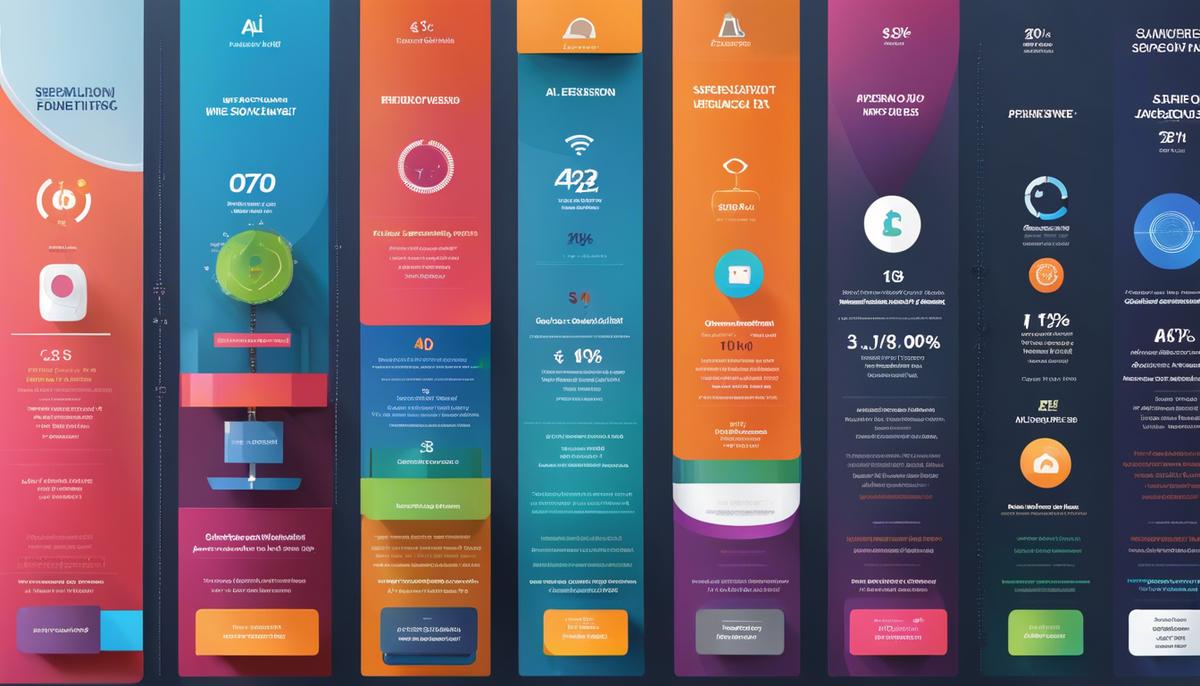The allure of subscription models is changing the face of business, providing companies with a reliable stream of revenue and offering consumers a new paradigm of convenience and personalization. At the heart of this transformation lies Artificial Intelligence (AI), the silent powerhouse propelling subscription services to new heights of efficiency and customer satisfaction. This essay ventures into the symbiotic relationship between the evolving subscription economy and the innovative AI technologies driving it forward. We unpack the intricacies of subscription models, explore how AI fortifies their value proposition, and examine the manifold ways in which it is exploited to analyze data, glean customer insights, and automate retention, ultimately ensuring that the subscription models of tomorrow are as dynamic as the market they serve.
Understanding Subscription Models
Subscription Models: The Engine of Recurring Revenue in Modern Business
In the dynamic landscape of modern commerce, subscription models have emerged as the lifeblood for businesses seeking a steady stream of income. It’s a strategy where customers pay for ongoing access to a product or service, rather than a one-off purchase. This approach pivots from traditional business models and has cemented its importance due to its predictability, scalability, and deepened customer relationships.
The essence of a subscription model lies in its simplicity and convenience. Users relish the idea of setting up their preferences once and enjoying uninterrupted service, be it weekly meal kits, monthly grooming products, or annual software licenses. From the business perspective, the advantages are multifaceted. A continuous, predictable revenue stream allows for better resource allocation, informed inventory management, and strategic decision-making.
Subscription services come in various forms, with each fostering customer loyalty while facilitating recurring revenue. Some popular formats include:
- Services: Think streaming platforms like Netflix or cloud-based solutions like Microsoft’s Office 365.
- Physical Goods: This includes regularly scheduled deliveries from companies like Dollar Shave Club.
- Access: Membership programs such as Amazon Prime offer exclusive benefits for an ongoing fee.
- Software: Referred to as Software as a Service (SaaS), platforms like Adobe Creative Cloud have embraced this model to widespread success.
A crucial component to subscriptions’ significance is their inherent ability to collect valuable data. By monitoring usage patterns, preferences, and feedback, businesses can refine their offerings, personalize the user experience, and innovate with precision. Furthermore, the constant touchpoints create opportunities to upsell or cross-sell, amplifying the lifetime value of each customer.
But why are subscription models critical for recurring revenue? The answer revolves around financial stability and growth potential. Consistent revenue streams cushion against market volatility, providing a reliable income source to fuel operations and investment in growth. Second, they reduce the reliance on finding new customers, which can be costlier than retaining existing ones. Third, the accumulative nature of subscriptions amplifies revenues over time without a corresponding increase in sales effort or marketing spend.
Finally, in the eyes of investors and stakeholders, a robust subscription-based revenue is a mark of a company’s health – signaling a strong, engaged customer base and a product or service that’s essential enough to warrant regular expenditure.
As markets evolve and consumer habits shift, the adoption of subscription models will likely continue to rise. In a world where convenience, customization, and quality are paramount, this recurring revenue approach aligns perfectly with the demands of today’s discerning customer. Businesses keen on long-term success are increasingly turning to subscriptions, solidifying them as a cornerstone of contemporary commerce.

AI in Subscription Optimization
Artificial Intelligence and the Transformation of Subscription Services
In the realm of subscription services, Artificial Intelligence (AI) is forging a new era of efficiency and personalization. Subscription businesses across the board, from streaming platforms to meal kit deliveries, are harnessing the capabilities of AI to revolutionize user experiences and operational logistics.
One notable application of AI is in the realm of predictive analytics. By analyzing customer behavior, AI algorithms can forecast subscription renewals and potential churn rates, enabling companies to proactively address issues and retain subscribers. This not only aids in predicting future revenue streams but also guides inventory management for physical goods, ensuring optimal stock levels without overextending resources.
Furthermore, AI excels in creating hyper-personalized content, contributing to enhanced user engagement. For streaming services, AI algorithms recommend movies and shows based on individual viewing histories, leading to increased session durations and loyalty. In the software domain, AI-powered tools adapt to user patterns to offer intuitive features and shortcuts, vastly improving the customer experience.
Customer support has also undergone a transformation thanks to AI. Chatbots and virtual assistants equipped with natural language processing capabilities provide real-time assistance, handling common inquiries and troubleshooting issues. This not only elevates customer satisfaction but also streamlines support staff workload, allowing them to focus on complex, high-touch interactions.
In terms of marketing and retention strategies, AI is instrumental. Through machine learning, services analyze conversion and engagement data to refine marketing campaigns, thus attracting and retaining subscribers more efficiently. Segmentation and targeting become significantly more sophisticated, enabling brands to deploy resources where they’re most likely to generate results.
For subscription boxes and eCommerce services, AI is pivotal in forecasting trends and consumer preferences. Incorporating AI in decision-making processes, businesses can tailor offerings to meet evolving tastes, often even before the subscriber realizes they’re interested in a new product category.
The intelligence AI provides goes beyond static reports, enveloping real-time insights that help services adapt swiftly to market changes and subscriber behaviors. Companies that effectively integrate AI are poised to not only improve their operational resilience but also to offer an unmatched, continually evolving subscriber experience.
Artificial Intelligence is undeniably transforming the subscription realm, making services more intuitive, responsive, and personalized than ever before. As AI technology grows more sophisticated, its integration within subscription models will undoubtedly evolve, setting new standards for user satisfaction and service innovation. With AI at the helm, subscription services can anticipate an auspicious future, marked by growth and an ever-deepening understanding of the diverse tapestry of subscriber needs and preferences.

Data Analysis and Customer Insights
Unlocking Subscriber Secrets: Leveraging AI for Enhanced Understanding
For businesses employing subscription models, data transcends beyond mere numbers—it’s the oracle revealing subscriber behaviors, preferences, and future actions. Smart exploitation of subscriber data not only arms businesses with insights to cater to existing customers but also furnishes a decisive advantage in scaling operations and retaining market share.
Subscriber data, ranging from demographic information to interaction logs, paints a vivid portrait of consumer patterns. Just as a meticulous artist uses a palette to create masterpieces, businesses use subscriber data for crafting tailored experiences that resonate with individuals on a personal level. Consider the granular detail achievable when examining an individual’s transaction history, service usage, and feedback—it’s a digital fingerprint, every ridge telling its own story about user satisfaction and potential pain points.
Enter the intelligence of Artificial Intelligence (AI). The analytical prowess of AI serves as the lens magnifying and interpreting these complex patterns. By deploying machine learning algorithms, AI dissects vast arrays of subscriber data, identifying trends that would otherwise require exhaustive manual analysis. It’s more than just sorting through information; it’s about anticipation—determining which subscribers are at risk of churn or who might be prime for an upgraded service package.
Moreover, AI breathes dynamic life into the static data. Engaging with subscribers becomes not just reactive, but proactive. Models powered by AI forecast potential subscriber behavior, influencing business strategies from up-selling to customer service improvements. The result is a platform that not only listens to the current subscriber base but also preemptively adjusts offerings, aligning perfectly with the evolving subscriber desires.
Capitalizing on AI’s capabilities translates directly to refined segmentation and targeting. Beyond broad categories, subscribers are clustered into micro-segments, each with distinct traits. Marketing campaigns ultimately become sharper, honing in on these groups with precision messaging, whether through email automation or personalized in-app notifications.
On the forefront of revolutionizing subscriber experience are AI systems designed for swift adaptation. Changes in subscriber engagement metrics trigger automated workflows that adjust content, offers, and support, all in real-time. It’s as if every subscriber has a personal concierge, adapting the service to fit their changing lifestyle instantaneously.
The meticulous integration of AI in understanding and acting upon subscriber data reveals patterns hidden in plain sight. It’s a testament to the potential AI holds in not just parsing data, but in transforming it into actionable insights for sustained growth and a deeper, almost prescient, connection with subscribers.
For businesses anchored in subscription models, AI is more than a tool—it’s an essential partner. It guarantees that companies remain agile and informed, capable of not just meeting but predicting subscriber needs, keeping them steps ahead in an ever-competitive marketplace. As the expanse of AI continues to grow, so does the potential for businesses to understand and cater to the very core of their subscriber bases, ensuring loyalty and securing their place at the zenith of customer-centric service.

Automating Retention Strategies
Enhancing Subscriber Retention with AI-Driven Insights and Interactions
In the dynamic world of subscription-based business models, maintaining and increasing subscriber retention is of paramount importance. One may ponder the capabilities of artificial intelligence in not only preserving a subscriber base but actively boosting retention rates. AI-driven automation emerges as a powerful ally in interpreting and responding to subscriber needs, enhancing engagement, and ultimately fortifying loyalty.
Subscribers are not a monolithic entity; their preferences and behaviors continuously evolve, a complexity AI is adept at navigating. Tailored user experiences have become the norm, with AI’s machine learning algorithms meticulously analyzing behavioral data to forecast and respond to individual subscriber needs. This degree of personalization is crucial in establishing a sense of value and relevance for subscribers, who are more likely to remain on board when their unique requirements are consistently met.
An element often overlooked is the timing and context of interactions with subscribers. AI excels in identifying opportune moments to engage, ensuring that communication strikes a chord when the subscriber is most receptive. This leads to a heightened probability of users assimilating offers and content updates with a positive disposition, thus solidifying their connection to the service.
Additionally, AI’s contribution extends to transforming passive strategies into active retention tactics. Services powered by AI can proactively reach out and re-engage subscribers showing signs of waning interest. By alerting businesses to such at-risk accounts, AI not only forestalls churn but also creates an opportunity to understand and address subscribers’ concerns, renewing their commitment.
AI’s sophistication also lies in its ability to refine customer support. Automated and intelligent systems provide immediate, context-aware assistance, resolving issues and answers efficiently. This level of support consistency and quality can reinforce subscribers’ trust and satisfaction, fostering a more robust and enduring subscriber relationship.
Beyond individual user interactions, AI opens strategic vistas by providing insights into widespread trends and collective behaviors within the subscriber base. Machine learning algorithms decipher vast datasets to reveal patterns, predict subscriber needs, and spotlight areas for potential enhancement or innovation. These gleanings inform strategic decisions, from content creation to service delivery, ensuring that offerings remain aligned with subscriber demand and expectations.
In sum, AI-driven automation is not merely a supplementary tool for managing subscriber bases—it is a transformative force that redefines how businesses understand, interact, and evolve with their subscribers. Employing AI offers a foresight and adaptability that are essential in not only sustaining but actively nurturing subscriber loyalty in an ever-changing subscription landscape. For enterprises looking to secure and expand their subscriber base, integrating AI into their retention strategies is more than a smart choice; it is an indispensable step toward enduring success.

Metrics and KPIs to Watch
Metrics for Evaluating AI-Enhanced Subscription Model Success
In the rapidly evolving landscape of subscription-based businesses, leveraging Artificial Intelligence (AI) becomes paramount. AI elevates the potential of subscription models by enabling companies to offer dynamic, personalized experiences and insights. But how do businesses quantify the return on their AI investments? To monitor the effectiveness of AI in subscription models, several key metrics are indispensable.
Churn Rate and Retention
A critical indicator of a subscription model’s health is the churn rate: the percentage of subscribers who cancel their subscription within a given time frame. Integrating AI can help pinpoint which factors lead to customer attrition and proactively address them. In contrast, retention rates provide a window into the efficacy of AI in nurturing long-term customer relationships. Tracking these metrics enables businesses to assess and tweak AI-initiated strategies aimed at improving subscriber loyalty.
Customer Acquisition Cost (CAC) and Customer Lifetime Value (CLV)
Equally crucial is understanding the balance between what businesses spend to acquire new subscribers and the revenue generated over the customer’s lifetime. AI can lower Customer Acquisition Cost by optimizing marketing campaigns and targeting prospects with a higher predisposition to convert. Simultaneously, it can elevate Customer Lifetime Value through personalized upsells, recommendations, and improved customer satisfaction. Analyzing CAC and CLV gives businesses insights into the sustainability and long-term profitability of their AI-enhanced subscription models.
Average Revenue Per User (ARPU)
ARPU extends beyond surface-level revenue metrics to reveal the revenue generated per subscriber. This figure is vital for businesses employing AI to customize offerings, as it reflects the effectiveness of using AI to upsell and cross-sell within the existing subscriber base. A consistent or increasing ARPU suggests that AI is successful in matching users with higher value options, enhancing their experience, and, in turn, boosting spending.
Engagement Metrics
Beyond revenue, subscriber engagement is a testament to the value subscribers derive from the service. Metrics such as session length, frequency of use, and interaction level offer insights into how engaged users are with the content or services provided. Through AI’s analysis of these patterns, businesses can initiate more effective strategies to boost engagement, a precursor to higher retention rates and ARPU.
Net Promoter Score (NPS)
NPS measures customer satisfaction and loyalty by asking subscribers how likely they are to recommend the service to others. AI can influence this metric by enabling businesses to deliver superior and personalized consumer experiences that foster advocacy. Consistent tracking of NPS can gauge the sentiment towards the business and the role of AI in promoting positive subscriber perceptions.
Conversion Rates
For any business experimenting with “freemium” models or free trials, conversion rates become a pivotal metric. They offer evidence of AI’s effectiveness in leading potential subscribers from a trial or introductory experience to a paid commitment. Higher conversion rates would indicate that AI has been instrumental in demonstrating value and suitability to prospects, thus validating the AI enhancements in place.
In conclusion, these metrics provide a multidimensional view of the success of AI applications in subscription models. By systematically tracking them, businesses can discern the tangible outcomes of AI, fine-tune their offerings, optimize operations, and foster a more robust, enduring bond with their subscriber base. When strategically aligned, AI not only powers the automated backend but also becomes a relentless generator of growth and innovation in subscription-based frameworks.

As we traverse the landscape of AI-optimized subscription models, it becomes abundantly clear that the confluence of sophisticated algorithms and strategic business acumen holds the key to unlocking unprecedented levels of success in the subscription domain. By leveraging AI to amplify customer insights, tailor experiences, and streamline retention efforts, businesses empower themselves to not only adapt to the shifts in consumer behavior but also to shape them. The era of AI-driven subscription services is here, and it beckons proactive engagement with the metrics and KPIs that define its progress. With this knowledge in hand, the future of subscription-based commerce is poised for a revolution, one where data intelligence and customer centricity converge to create enduring business value.




